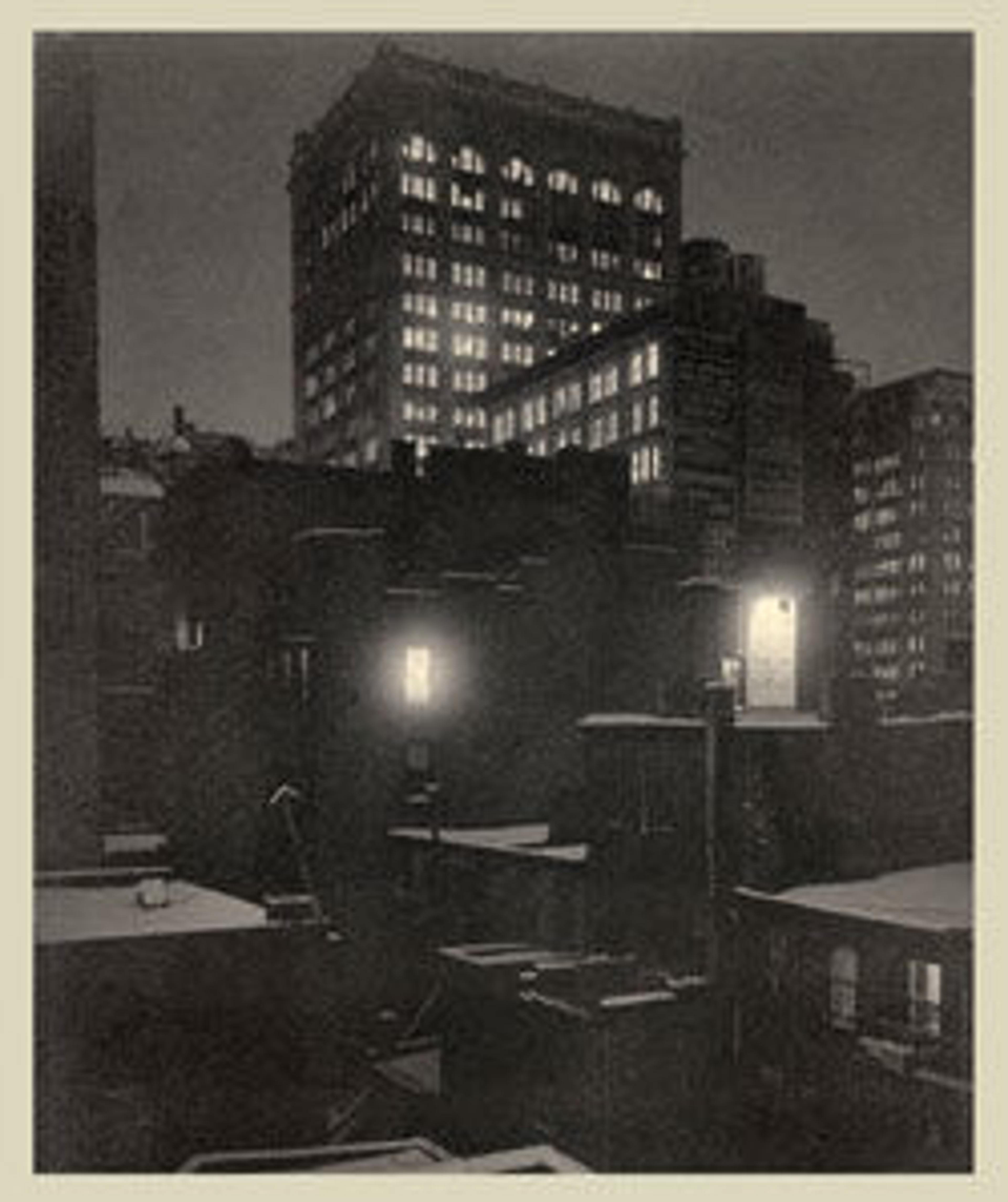[Brancusi's Studio]
Steichen lived in Paris on and off from 1900 to 1924, making paintings and photographs. A cofounder with Alfred Stieglitz of the Photo-Secession, Steichen offered his former New York studio to the fledgling organization as an exhibition space in 1905. Known first as the Little Galleries of the Photo-Secession and later simply by its address on Fifth Avenue, 291, the gallery introduced modern French art to America through the works of Rodin, Matisse, Cézanne, and, in 1914, Constantin Brancusi.
Steichen and Brancusi, who met at Rodin's studio, became lifelong friends. This view of a corner of Brancusi's studio on the impasse Roncin shows several identifiable works, including "Cup" (1917) and "Endless Column" (1918). The photograph's centerpiece is the elegant polished bronze "Golden Bird" (1919), which soars above the other forms. Distinct from Brancusi's studio photographs—subjective meditations on his own creations—Steichen's view is more orchestrated, geometric, and objective. "Golden Bird" is centered, the light modulated, and the constellation of masses carefully balanced in the space defined by the camera. A respectful acknowledgment of the essential abstraction of the sculpture, the photograph seems decidedly modern and presages the formal studio photographs Steichen made in the service of "Vanity Fair" and "Vogue" beginning in 1923.
Steichen and Brancusi, who met at Rodin's studio, became lifelong friends. This view of a corner of Brancusi's studio on the impasse Roncin shows several identifiable works, including "Cup" (1917) and "Endless Column" (1918). The photograph's centerpiece is the elegant polished bronze "Golden Bird" (1919), which soars above the other forms. Distinct from Brancusi's studio photographs—subjective meditations on his own creations—Steichen's view is more orchestrated, geometric, and objective. "Golden Bird" is centered, the light modulated, and the constellation of masses carefully balanced in the space defined by the camera. A respectful acknowledgment of the essential abstraction of the sculpture, the photograph seems decidedly modern and presages the formal studio photographs Steichen made in the service of "Vanity Fair" and "Vogue" beginning in 1923.
Artwork Details
- Title: [Brancusi's Studio]
- Artist: Edward J. Steichen (American (born Luxembourg), Bivange 1879–1973 West Redding, Connecticut)
- Date: ca. 1920
- Medium: Gelatin silver print
- Dimensions: 24.4 x 19.4 cm (9 5/8 x 7 5/8 in.)
- Classification: Photographs
- Credit Line: Gift of Grace M. Mayer, 1992
- Object Number: 1992.5149
- Rights and Reproduction: © 2025 Artists Rights Society (ARS), New York
- Curatorial Department: Photographs
More Artwork
Research Resources
The Met provides unparalleled resources for research and welcomes an international community of students and scholars. The Met's Open Access API is where creators and researchers can connect to the The Met collection. Open Access data and public domain images are available for unrestricted commercial and noncommercial use without permission or fee.
To request images under copyright and other restrictions, please use this Image Request form.
Feedback
We continue to research and examine historical and cultural context for objects in The Met collection. If you have comments or questions about this object record, please contact us using the form below. The Museum looks forward to receiving your comments.
